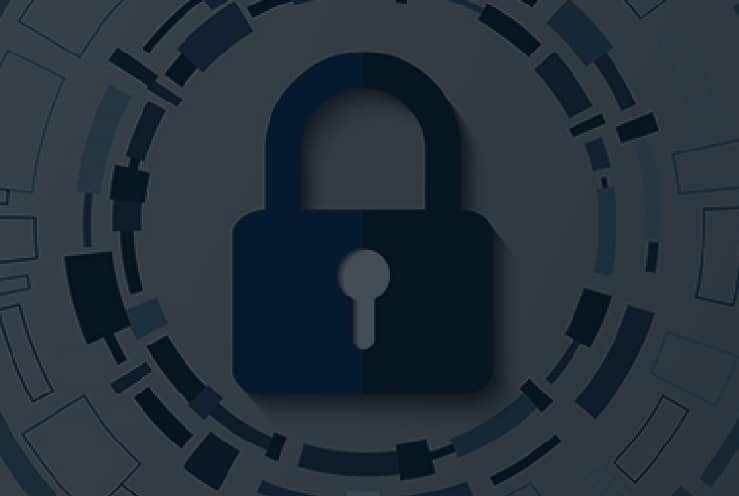
How Texting for Sales Speeds up the Sales Cycle (+10 Templates)
Texting gives your business a direct line to your customers. It cuts down on waiting times, keeps your customers engaged, and helps you close deals faster.
With nearly everyone opening their texts, it’s almost guaranteed that your message will be seen. You can send customers updates, special deals, or reminders in real time, making it easier to push toward closing a sale.
In this article, we’ll explore how to use SMS texting for sales and present ten effective examples you can use.

Get Started With Business Texting
View our pricing, and start your free trial with Textellent today!
How Does SMS Accelerate the Sales Cycle?
Texting sales prospects is becoming increasingly popular due to its effectiveness in engaging recipients.
In fact, SMS marketing lists are ten times more valuable than email marketing lists. This means that 100,000 SMS subscribers is equal to 1 million email subscribers.
Immediate Communication
SMS allows for instant message delivery, ensuring that communication is as immediate as possible. Sales teams can quickly inform prospects about new offers, updates, or reminders, which helps keep the sales process moving without delays.
High Read and Response Rates
Text messages have a higher open and response rate than emails. When the sales team sends out offers, reminders, or follow-up messages, they are more likely to get a timely response.
Quick responses help move negotiations forward or close deals, as customers respond faster to texts than to other forms of communication.
Better Customer Experience
When customers receive instant updates, responses, and support through text messages, they feel valued and taken care of. This fast response time builds trust and loyalty because customers appreciate their questions or concerns being addressed promptly.
Effective Follow-Ups
With SMS, following up with leads can be more timely and less invasive than phone calls. Sales representatives can send a text after an initial meeting or proposal, keeping the conversation going and the interest alive without being too pushy.
Simplified Lead Nurturing
SMS can be used to send personalized messages based on the lead’s previous interactions, ensuring that the content is relevant and engaging. This targeted approach helps in moving the lead more smoothly and swiftly through the sales funnel.
Automation of Routine Communications
SMS can automate many parts of the sales process, such as appointment reminders, follow-up prompts, and regular updates. This automation frees up time for sales teams to focus on more complex tasks, which increases overall efficiency.
Additionally, automated messages can also be scheduled to send updates and reminders outside of business hours.
Types of Sales Texts
Sales teams use SMS for a variety of purposes, each designed to move prospects through the sales cycle more efficiently:
- Appointment reminders: Reminders reduce no-show rates and ensure that both sales representatives and prospects are prepared for the discussion, potentially speeding up the sales cycle.
- Follow-up communications: After a meeting or a sales pitch, quick follow-up texts can keep the momentum going.
- Promotions and special offers: Because it’s typically read within minutes of receipt, SMS is a great channel for sending out timely promotions or special discount offers to prospects and customers.
- Product updates and announcements: When a new product launches or an existing product is updated, SMS can quickly and effectively alert your customer base.
- Lead nurturing: SMS can be used to set up drip campaigns offering tips, advice, or helpful information that nurtures the relationship and builds trust without the formality of an email or the intrusiveness of a phone call.
- Customer feedback and surveys: SMS surveys are convenient for the customer and tend to have higher response rates than other methods.
- Order confirmations and updates: Sending SMS confirmations for orders, shipping updates, and delivery notifications can improve the customer experience.
10 Effective Templates for Sales Texting
Let’s take a look at a few text message examples you can draw inspiration from. These templates are designed to address various stages of the customer journey and can be tailored to fit your specific business needs:
1. Initial Contact
Hi [Customer Name], this is [Your Name] from [Your Company]. We’re excited to help you explore our [products/services]. Can we chat for a minute at your convenience?
2. Follow-Up After Initial Contact
Hello [Customer Name], I hope this message finds you well! I wanted to follow up on our recent conversation and the estimate I provided. Do you have any questions, or are you ready to proceed?
3. Special Offer Announcement
Great news, [Customer Name]! We’re offering an exclusive 15% discount on [specific product/service] for our valued customers. Use code [CODE] at checkout. Offer ends [date].
4. Appointment Reminder
Hi [Customer Name], just a reminder about your appointment on [Date] at [Time]. Please reply with ‘YES’ to confirm or ‘NO’ to reschedule. See you soon!
5. Re-engagement of Cold Leads
Hello [Customer Name], we’ve missed you at [Your Company]! We’d love to catch up and see how we can assist you this year. Are you available for a quick update call next week?
6. Post-Purchase Follow-Up
Hi [Customer Name], thank you for your purchase of [Product/Service]! How is everything working out for you? Let us know if you have any questions or need further assistance.
7. Asking for Reviews or Feedback
Hello [Customer Name], we value your feedback! Please share your thoughts on your experience with [Product/Service]. Here’s a quick review link: [Link]. Thank you!
8. Reminder of Unfinished Transaction
Hi [Customer Name], it looks like you left something in your cart! Complete your purchase with a 10% discount. Use code: BACK10 at checkout. Hurry, it expires in 24 hours!
9. Announcement of New Product or Service
Exciting news, [Customer Name]! We’ve just launched [New Product/Service]. Check it out [Link] and be the first to benefit from our latest offering!
10. Holiday or Seasonal Promotion
Happy [Holiday], [Customer Name]! Celebrate with us with an exclusive offer just for you. Enjoy [Percentage]% off on our bestsellers until [End Date]. Shop now: [Link]
Is It Legal to Send Texts to Sales Prospects?
When using SMS as a communication tool, you must understand the legal aspects of texting sales prospects. The legality centers on obtaining proper consent and adhering to regulations, such as the Telephone Consumer Protection Act (TCPA) in the United States.
The most essential step is obtaining explicit consent from the recipients before sending any promotional messages. The consent must be clear and documented, and the process for obtaining it should be transparent to avoid any legal issues.
Each sales text message should also provide a simple way for recipients to opt out of future messages, respecting their preferences and aligning with legal requirements.
Additionally, it’s important to handle all personal data collected through SMS campaigns carefully. This includes securing the information properly and using it only for the agreed purposes.
Finally, regulations often dictate the timing and frequency of messages to prevent spamming. Adhering to these rules is important not only for legal compliance but also for maintaining the trust and engagement of your audience.
The Best Business Texting Platform for SMS Sales
Textellent offers advanced options for integrating with other systems, like CRMs and appointment scheduling systems, which helps simplify all customer interactions. However, it’s flexible enough that you don’t have to integrate it if you don’t need to, making it easy and quick for any business to start using it.
With Textellent, you can use SMS segmentation based on your customers’ preferences, history, or actions, like attending an event or getting an estimate. This allows you to send highly targeted messages that are more likely to get a response.
Textellent is also exceptional in lead generation, nurturing, and follow-up. The platform enables you to automatically send personalized messages in response to customer inquiries.
Additionally, its drip campaign capabilities can be triggered by various customer activities, such as attending an event, providing an estimate, or making a purchase. These automated campaigns help maintain a consistent and timely interaction with prospects.
Another advantage over other platforms is Textellent’s ability to track response rates and conversions. When messages include links to a purchase site or promotional content, Textellent provides detailed analytics that help you understand the effectiveness of each campaign.
Textellent focuses on the entire customer journey, from initial contact through post-purchase follow-up. This ensures that you can maintain a continuous and engaging relationship with your customers.
Best Practices for Using SMS in Sales
Using SMS effectively in sales requires a strategic approach to ensure that the communication is timely, relevant, and compliant. Here are the best practices for integrating SMS into your sales strategy:
Obtain Clear Consent
First, be upfront about what signing up for your texts means. Tell customers exactly what type of messages they’ll receive, such as promotions or updates, and how often they’ll get them.
You can ask for consent in several ways, like during the checkout process on your website, on a signup form or inquiry form, or even in person at a store or event. Make sure the method you use is simple and clear.
For example, you could include a checkbox on a form that customers can tick to agree to receive SMS messages, along with a brief explanation right next to it.
It’s also important to keep a record of who has agreed to receive your messages and how they gave their consent. This helps you stay organized and protects you if anyone ever questions your practices.
Under laws like the TCPA, you need to be able to show that people explicitly agree with your messages.
Keep Messages Clear and Concise
SMS, by its nature, requires brevity and clarity due to the limited screen space on cell phone devices and readers’ typically short attention spans. If the sales text message is too long, there’s a higher chance it will be skimmed or not fully read.
You should start your message with the most critical information. If you’re sending a promotional offer, start with the key details, such as “Get 30% off all items this weekend only!” to grab attention and convey essential information at first glance.
Having a single, clear call to action (CTA) in each message helps direct the recipient’s next step without confusion. Whether you want them to visit a link or take advantage of a promotion, make sure this CTA is unambiguous and easy to follow.
Even a small typo or grammatical error can detract from the professionalism of your message and potentially confuse the reader. Before sending your text message, take a moment to review it to ensure it’s free from errors and clear in its intent.
Personalize the Communication
Starting your message with the recipient’s name immediately makes the interaction feel more personal and friendly.
A simple “Hi [Name]” can make a big difference in how the text message is perceived, as it signals to the recipient that the message is meant specifically for them.
If the recipient has previous interactions with your company, such as past purchases or inquiries, referencing these can improve the personal connection. For example, “We noticed you enjoyed our X product last time—thought you might be interested in Y, which is similar.”
Segment Your Audience
Start by gathering as much data as possible about your customers. This includes basic demographic information like age, gender, and location.
You can also get more detailed data, such as purchase history, browsing behavior, and previous interactions with your brand. The more data you have, the more precisely you can segment your audience.
Based on the data collected, identify meaningful ways to divide your audience into segments. A few examples of segmentation strategies include:
- Demographic segmentation: Grouping customers based on age, gender, income level, education, etc.
- Geographic segmentation: Targeting messages based on the customer’s location, particularly useful for location-based offers or events
- Behavioral segmentation: Dividing customers based on their actions, such as frequency of purchases, product preferences, and engagement with previous campaigns
- Psychographic segmentation: Segmenting based on lifestyles, values, interests, and attitudes
Once you have defined your segments, create tailored messages that address the specific needs, interests, or behaviors of each group.
For example, send targeted promotions that match a segment’s purchase behavior or craft messages that appeal to the unique interests of different demographic groups.
Time Your Messages Appropriately
Knowing the daily routine of your target audience can help determine the best times to send SMS messages.
If your audience consists primarily of working professionals, early mornings before work or early evenings after work might be ideal times. You should avoid sending sales text messages too early in the morning or late at night, as this can annoy recipients and lead to higher opt-out rates.
Moreover, if your audience is spread across different geographical locations and time zones, it’s important to adjust your send times accordingly.
Ensure Easy Opt-Out Options
SMS messages, especially promotional ones, should include simple instructions on how recipients can stop receiving messages. This is usually done by including a short line at the end of the text message, such as, “Reply STOP to unsubscribe.” Make sure this instruction is clear and easy to understand.
You can use SMS marketing platforms like Textellent that automatically manage opt-out requests. When a recipient replies with “STOP” or another predetermined keyword, the system immediately removes them from the future communications list.
Automation ensures that the process is swift and error-free, which prevents any accidental messages that could lead to frustration or complaints.
Once a user has opted out, you can send a final confirmation text message to reassure them that they won’t receive more messages, though this is not a requirement.
Text Your Way to Faster Sales with Textellent
Boost your sales with Textellent! Use SMS to connect with leads quickly and move them through your sales process faster.
No more waiting for slow responses. This business text messaging platform automates your messages, making sure each lead is contacted right away.
Improve your sales strategy—join Textellent now and start seeing better sales results. Sign up for a free trial or schedule a demo consultation today!
FAQs About Texting for Sales
Can SMS marketing help in gathering customer data for sales?
SMS can be a useful tool for collecting customer data. You can send short surveys or quick questions via SMS and ask customers to reply with specific information.
A direct approach often results in higher response rates than email surveys. The data collected can then be used to refine your sales strategy and personalize future communications.
What is the role of A/B testing in SMS sales campaigns?
A/B testing in SMS campaigns involves sending two slightly different versions of the same message to two subsets of your audience to see which performs better. This practice helps you understand what message content, tone, or timing leads to more opens, clicks, or sales.
Can automated SMS be used for upselling and cross-selling?
Yes, automated SMS is an effective tool for upselling and cross-selling. Analyzing purchase history and customer preferences can automate messages that suggest related products or higher-tier services that might interest your customers.
These recommendations can be timed to coincide with when a customer is most likely to make a follow-up purchase.





